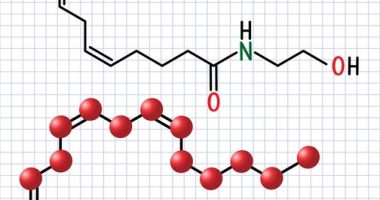**Introduction**
Exploring the toxicity of Himantura imbricata, a species of stingray prevalent in global marine environments, is crucial due to the potential hazards its venom poses to both humans and marine life. Despite the widespread distribution of this species, comprehensive studies detailing the biochemical properties and toxicological impacts of its venom are scarce. In response, our current research utilizes the zebrafish (Danio rerio) model to analyze and evaluate the venom’s toxic effects systematically. Renowned for its genetic closeness to mammals and its transparency during early life stages, the zebrafish model presents an ideal organism for toxicological studies. This research primarily targets understanding the histopathological changes, hemolytic activity, and overall physiological disturbances induced by the crude venom of Himantura imbricata when administered to juvenile zebrafish through subcutaneous injections. Various concentrations of venom were tested to establish a correlation between the dose and the severity of the observed effects, thereby contributing to the body of knowledge necessary for the development of effective treatments and preventive measures against stingray envenomation. With detailed histological examinations across multiple organ systems, this study aims to elucidate the venom’s damaging pathways and potentially pave the way for future pharmacological advancements.
**Introduction**
Exploring the toxicity of *Himantura imbricata*, a prevalent stingray species in marine ecosystems worldwide, is essential due to the potential hazards its venom poses to humans and marine fauna. While this species is common, in-depth studies on the biochemical qualities and toxic impacts of its venom are limited. Our research utilizes the zebrafish (*Danio rerio*) model to systematically analyze the venom’s toxicological effects due to its genetic similarity to mammals and its early life-stage transparency. We aim to understand the histopathological alterations, hemolytic activity, and physiological disruptions caused by *Himantura imbricata* venom through subcutaneous injections in juvenile zebrafish. By testing varying venom concentrations, we seek to define the relationship between dosage and toxicity, providing critical insights for future medical interventions and stingray envenomation prevention measures. This study concentrates on detailing the venom’s destructive mechanisms via extensive histological analysis, potentially guiding future pharmacological developments.
**Background**
The stingray *Himantura imbricata* is notorious for its venomous sting, posing significant risks to humans and aquatic life. Stingrays, generally passive, use their venom as a defense mechanism, leading to severe pain, tissue damage, and occasionally fatal toxicity in humans. Existing literature mainly provides generalized information on stingray venom effects without delving into specifics, leaving a gap in targeted treatment regimens.
A closer look at *Himantura imbricata* highlights the need for a stronger understanding of its venom composition and impact. Zebrafish have become a top choice in toxicological research due to their physiological and genetic resemblance to humans, rapid lifecycle, and the translucency of larvae and juveniles, which simplifies observational studies. By applying this model, our study aims at bridging the knowledge gap, providing a crucial link between experimental toxicology and applicable clinical practices.
**Methodology**
Our research employed juvenile zebrafish as the primary model to observe the systemic effects of *Himantura imbricata* venom. Starting with venom extraction, the process involved carefully capturing and milking venom from live stingrays, followed by purification. The zebrafish were then divided into control and test groups; the latter received varying concentrations of venom via subcutaneous injections.
We monitored the subjects for signs of physiological distress, behavioral changes, and mortality for 72 hours post-injection. Histopathological assessments were conducted on major organs such as the liver, kidneys, and heart to identify cellular damage and alterations. Hemolytic assays complemented these observations by measuring the degree of destruction in blood cell membranes, indicative of venom potency.
**Findings**
Our examinations revealed dose-dependent toxicity in zebrafish, with higher venom concentrations correlating with increased mortality and severe organ damage. Substantial histopathological changes included necrosis in liver tissues, glomerular atrophy in kidneys, and myocardial disarray in the heart. Noticeably, the venom also exhibited significant hemolytic activity, implying a destabilizing effect on blood cell membranes.
Behavioral changes such as decreased locomotion and erratic swimming were evident in zebrafish exposed to lower venom concentrations, suggesting neurotoxic effects alongside cytotoxic ones. These findings underscore the venom’s complex mode of action, affecting multiple organ systems and physiological functions.
**Implications**
The implications of this study are manifold. By deciphering the specific pathways through which *Himantura imbricata* venom exerts its effects, our research provides a foundational platform for developing targeted antivenoms and therapeutic interventions. Moreover, understanding these mechanisms can aid in better risk assessments and precautionary strategies for areas where human interactions with stingrays are frequent.
The broader ecological implications include potential insights into the evolutionary role of stingray venom and its impact on predator-prey dynamics within marine ecosystems. Furthermore, this research emphasizes the utility of zebrafish









